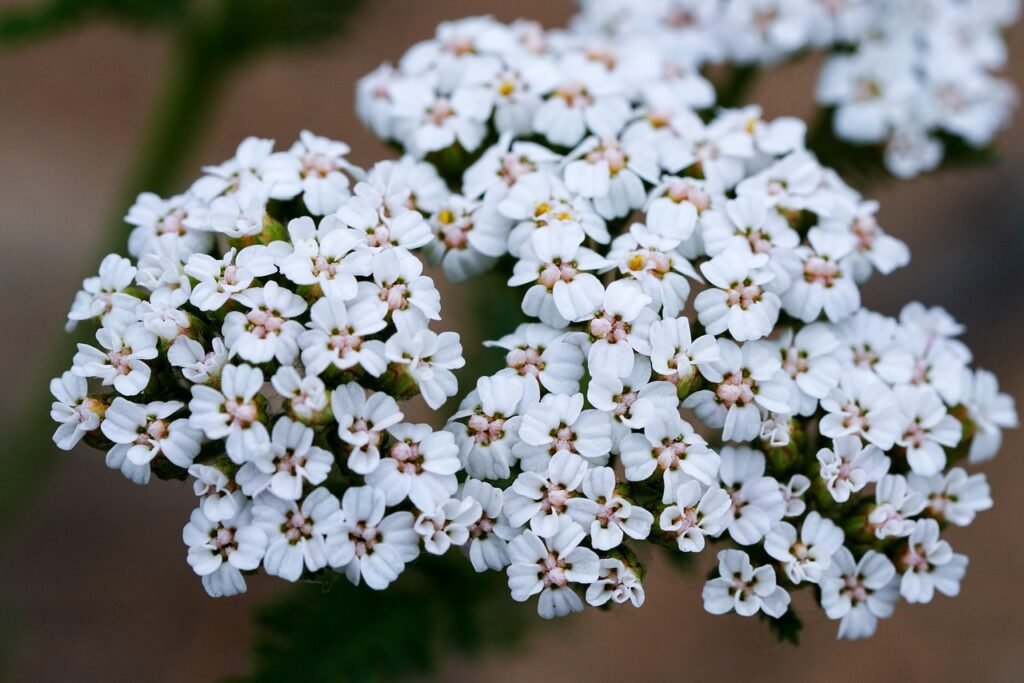Yarrow plants, known for their lovely flowers and diverse applications, make an excellent addition to any garden. Belonging to the Asteraceae family, these plants are native to Europe, Asia, and North America. Yarrow is highly resilient, thriving in various conditions, which makes it an ideal choice for both novice and experienced gardeners. One of the key reasons for yarrow’s ease of maintenance lies in its adaptability to almost any soil type.
While it prefers well-draining, slightly alkaline soil, it can tolerate acidic soils and can grow in full sun or partial shade. Moreover, yarrow plants do not demand excessive watering and require minimal fertilizer or maintenance once established. With few pests or diseases affecting them, yarrow plants are relatively hassle-free, making them a popular choice for hassle-free gardening.
Can Yarrow Plants Thrive in an Apartment Garden?
Yes, yarrow plants can thrive in an apartment garden. They are easy to maintain and add a pop of color to any small space. Urban green thumbs can use these apartment gardening tips to successfully grow yarrow plants indoors, bringing a touch of nature to their urban oasis.
Is Yarrow Easy To Maintain?
Yarrow plants are an excellent addition to any garden due to their lovely flowers and many uses. They belong to the Asteraceae family and are native to Europe, Asia, and North America.
Yarrow is a hardy plant that can survive in many different conditions, making it easy to maintain and perfect for beginner gardeners. One of the reasons yarrow is easy to maintain is because it can grow in almost any type of soil.
It prefers well-draining soil that is slightly alkaline but can tolerate acidic soils as well. Yarrow thrives in full sun, but it can also grow in partial shade.
It’s important not to overwater yarrow plants since they prefer drier soil conditions. Another reason why yarrow is easy to maintain is because it doesn’t require much fertilizer or maintenance once established.
It’s recommended to fertilize yarrow with a low-nitrogen fertilizer once a year in the spring when new growth begins. Deadheading spent blooms isn’t necessary for yarrow’s overall health, but it may improve its appearance by encouraging new growth and prolonging blooming time.
Yarrow plants have few pests or diseases affecting them; therefore, they do not require regular inspection or treatment for these issues. However, aphids or spider mites may target yarrows at times.
Thus spraying with insecticidal soap or using natural remedies such as neem oil can handle the issue efficiently since they don’t harm beneficial insects like lady beetles and lacewings which prey on plant pests. Growing yarrows are easy since they thrive under most conditions without requiring extra care from their gardener owners beyond occasional pruning of dead stems during dormancy periods in fall while ensuring adequate watering only when soil appears dry down below 3 inches deep from surface level.
Does Yarrow Need To Be Deadheaded?
Deadheading is a common gardening practice that involves removing the spent blooms from flowering plants to promote further blooming. Yarrow, in particular, can benefit greatly from deadheading – the process of removing spent flower heads. Not only does it help keep your yarrow plants looking tidy, but it also encourages more robust growth and multiple rounds of blooming throughout the growing season.
One of the benefits of deadheading yarrow is that it can help prevent self-seeding. While yarrow doesn’t spread aggressively like some other garden plants, allowing its flowers to go to seed can result in unwanted volunteers popping up all over your garden bed.
Deadheading can prevent this by removing the spent blooms before they have a chance to produce seed heads. Another advantage of deadheading yarrow is that it promotes fuller growth and more vibrant blooms.
As yarrow flowers fade and die back, they can detract from the overall appearance of your plant. By regularly removing these spent blooms, you encourage new shoots to form and produce fresh flowers for an extended period.
If you’re growing yarrow as a cut flower for use in arrangements or bouquets, deadheading is an absolute must. Removing spent blooms not only keeps your plant looking neater but also ensures that you have plenty of fresh stems available for harvesting throughout the season.
With regular deadheading practices in place, you’ll be able to enjoy beautiful arrangements featuring colorful clusters of yarrow flowers all summer long. Overall, while not strictly necessary for healthy growth, deadheading can be a highly beneficial practice for maintaining healthy and attractive yarrow plants in your garden bed or landscape design plan.
Conclusion
Yarrow is an incredibly versatile and easy-to-care-for plant that offers a wide range of benefits to any garden. Whether you are looking for a colorful addition to your flower bed or a natural remedy for various ailments, yarrow has got you covered.
One of the best things about yarrow is its low-maintenance nature. As previously discussed, this plant requires minimal watering, fertilizing, and pruning to thrive.
This makes it an ideal choice for busy gardeners who don’t have a lot of time to dedicate to their plants. Additionally, the medicinal properties of yarrow make it an even more valuable asset to any garden.
From treating wounds and reducing inflammation to aiding digestion and boosting immunity, this plant has been used for centuries as a natural remedy. By adding yarrow to your garden, you can enjoy the many health benefits that this plant has to offer.
Overall, yarrow is an excellent choice for anyone looking to add some beauty and functionality to their outdoor space. With its stunning flowers, easy-care requirements, and medicinal properties, it’s no wonder that this plant has been so widely praised throughout history.
So why not give it a try? Your garden – and your health – will thank you!

